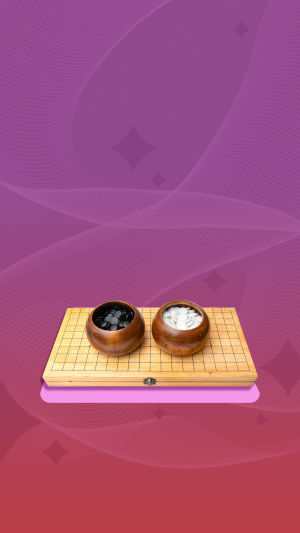Go is an ancient form of mind game play and those who learn to play it are generally good thinkers, so let me introduce the basic game of Go.
Go presumably around the 6th century BC. It is a strategic two-person chess game, and there are also joint or team play modes of Go.
In the form of two against two, one against many, and many against many. The game is played on a checkered board with black and white pieces.
Currently popular in the Asia Pacific region, Weiqi is a very popular game of chess. To a large extent, Go reflects the essence of traditional thought and culture.
There are nine stars on the Go board, the middle one being called "Tianyuan", which means the first and "Tianyuan" means the highest point in the sky.
Concentric squares can be found around the centre of the 'tian yuan'. Each intersection is a star square, which is where we need to place our pieces when playing chess.
The stones are divided into black and white, with 181 black stones and 180 white stones, adding up to 361 black and white stones, exactly the same as the number of points on the board.
The process of playing Go is in fact a meticulous process of logical reasoning. Every move needs to be analysed in the context of the situation on the board, combining the moves that have been made with those that have not to form a synergy of the whole.
This is the global awareness of Go, and how well the whole game is coordinated will have a direct impact on how the whole board changes.
Sitting quietly in a game requires that the pieces are dropped without regret, that the game is watched without speaking.
The child sits upright, which is a very appropriate activity for developing character. As the child's mind becomes calmer, he or she will be able to learn other subjects with half the effort.
When children are first introduced to Go, they may move the pieces around and scratch their ears. But through the correction of their teacher and the atmosphere around them, they will gradually develop these good habits.
The biggest difference between Go and other artistic disciplines such as music and painting is that there are winners and losers in Go. Some children play with the mindset that they can only win and not lose, and cry when their opponent eats them.
It is not easy to lose a game of Go. It is good to have a sense of victory, a sense of honour and a sense of crisis, but this is not enough. We need to be brave when we encounter setbacks, to develop the habit of relying on ourselves, of never giving up in the face of adversity, of quickly adjusting our state of mind. To play Go is precisely to rely on ourselves to overcome our opponents in the face of reality.
The wisdom that one is born with does not vary greatly, but depends to a large extent on the cultivation of one's own wisdom.
For example, a rushing river cannot be clear even if it is clean, it can be clear once the water is calm. The human mood, the human mind is like water, only when we calm down our thoughts will be clear and we will think deeply.
It is only when we are calm that our thoughts become clear and our thinking is far-reaching, and our memories are as clear as if we were painting on white paper.





